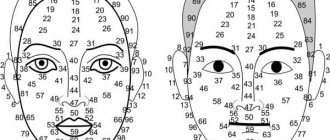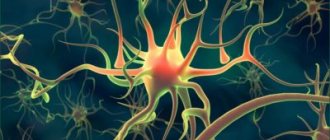Table of contents
- Temperament is what we are born with
- Character is what makes us unique
- When developing character, we take into account temperament
- Is it possible to influence the character of an adult?
In order to work on ourselves, we need to clearly understand what we can change in ourselves and what we cannot.
Each of us has a temperament and character. Scientists define these levels of the psyche in different ways. Some say that they are one and the same thing or consider temperament to be part of character. Others contrast them. But the most widespread idea in our time is the idea of temperament as the biological basis of character.
What is temperament
The doctrine of temperaments originated in the period of Antiquity and was supplemented with the development of human civilization.
Temperament is a stable individual set of psychophysiological qualities of an individual, manifested in behavior and activity.
Temperament determines:
- pace of thinking and perception,
- concentration,
- emotionality,
- susceptibility,
- willpower,
- ease of changing occupation,
- rhythm and duration of activity,
- locus of control and other personality traits.
Temperament types: melancholic, choleric, sanguine, phlegmatic.
Temperament is predetermined by the type of higher nervous activity and congenital characteristics. The physiology of the brain determines the psyche and characteristics of temperament.
The set of characteristics of the nervous system gives rise to one of four types of higher nervous activity:
- unbalanced strong type - choleric,
- balanced, active, strong - sanguine,
- balanced inert strong - phlegmatic,
- weak type - melancholic.
Temperament has positive and negative characteristics. Usually people have a mixed type of temperament, with one type predominant.
For example, if a person is 45% melancholic, 25% phlegmatic, 20% sanguine, 10% choleric, then they say that he has a melancholic temperament.
These qualities from birth are supplemented by character traits acquired in the process of upbringing and development and form the individual’s individuality.
Is it possible to influence your own character?
In theory, yes, and it’s easier than changing your temperament or personality type
. In practice, such changes are not easy. Character is a complex combination of habits, behavior, way of thinking and types of mental response. A trend has been identified: with age it changes in a negative direction, therefore it is believed that older people have a more pessimistic view of life and it is more difficult to communicate with them.
There is still debate about whether genetic predisposition influences character
. Some scientists claim that behavior is not related to genes and is formed as a result of upbringing, depends on a person’s environment, his education, life circumstances and other factors. Other researchers have no doubt that there is a connection between genes and character, and evidence of this comes from experiments conducted on identical twins growing up in different environments. Separated siblings showed high similarity in reactions.
One thing is certain: there is no predetermination, and any person can make adjustments to their behavior
.
In childhood, when character is just being formed, it is easiest to influence him, but this is also possible in adulthood. The matter will be helped by the belief that the desired changes are feasible (which in fact they are) and strong motivation
- when you know exactly why you are changing.
By the way, actors have behavioral flexibility - this helps them get used to the role.
Does this mean that everyone is capable of shaping their own character to their own taste?
Let us repeat that we all know how to act atypically when necessary. For example, a person who lacks self-confidence can muster the willpower to speak energetically in front of a large audience - especially if his career depends on it. It is much more difficult not to change the way you react in a single situation, but to “reboot” the system as a whole. In many ways, it depends only on the person whether he wants to change something in himself.
The easiest way to understand which way to change is to watch how people around you react to the same situations that happen to you. A character from a book or TV series that you like will also work. Imagine how he would react to the rudeness of his boss if he were in your place - would he remain silent, laugh it off, or stand up for himself? Try to do the same. Again, first you will need to control yourself, then it will become a habit
. The main thing is to train and you will succeed!
Characteristics of temperament types
Each individual is unique; it is impossible to squeeze him into the framework of one or another typology or classification. In non-standard situations, personality manifests itself in different ways.
A calm phlegmatic person can be angry and aggressive, a cautious melancholic person commits a crazy act, a frivolous sanguine person becomes responsible, and a choleric person becomes despondent.
Determining temperament is the first step to understanding the innate characteristics of the psyche. The predominant type of temperament is determined independently by familiarizing yourself with the characteristics of the four temperaments.
Psychodiagnostic techniques allow us to determine a person’s temperament type. For example, the temperament test “Personality Questionnaire” by G. Eysenck.
Types of temperament and their characteristics:
- Melancholic.
Positive features:
- sensitivity,
- emotionality,
- intuitiveness,
- responsiveness,
- no conflict
- altruism,
- responsibility,
- caution,
- attentiveness,
- modesty.
Negative features: anxiety, suspiciousness, vulnerability, passivity, isolation, timidity.
- Phlegmatic person.
Positive features:
- calmness,
- equilibrium,
- emotional stability,
- determination,
- hard work,
- reliability,
- organization,
- loyalty,
- rationality.
Negative characteristics: slowness, isolation, taciturnity, lack of initiative, indifference, cynicism.
- Choleric.
Positive features:
- activity,
- energy,
- initiative,
- strength of will,
- endurance,
- performance,
- passion,
- expressiveness and brightness of feelings, speech, facial expressions.
Negative characteristics: imbalance, impetuosity, irritability, short temper, aggressiveness, lack of control, conflict.
- Sanguine.
Positive features:
- optimism,
- sociability,
- activity,
- artistry,
- charm,
- creativity,
- mobility,
- gaiety,
- a wealth of facial expressions and gestures,
- ease of perception of life.
Negative characteristics: irresponsibility, frivolity, inconstancy, immaturity, superficiality.
The type of temperament remains unchanged, being slightly transformed in the process of life.
A person develops positive temperamental traits and learns to compensate for negative ones, but it is impossible to change the type of temperament.
A melancholic person will not turn into a choleric person, but may develop some features of a choleric temperament.
The constancy of negative characteristics of temperament is corrected when the personality develops, character is nurtured, and the necessary skills are developed.
How is it formed and when is it not too late to improve your character?
There are features that can be called innate. Of course, people are not born with characteristic features, but there are physiological prerequisites for their development. For example, if a child’s brain is very active, they say that he grasps things quickly (on the fly), they note flexibility of thinking, and a desire for knowledge. There are, on the contrary, children who are thoughtful from birth - they usually do not fall or get into trouble from the very first steps, even if they started relatively late.
But the development of temperament is largely influenced by society. In childhood, these are first parents and relatives, then kindergarten teachers and peers, and in school years - teenagers and teachers. In most cases, behavior is copied, the baby learns the rules - what is possible and what is not.
This is why it is so important what kind of example relatives set for the younger generation.
The most productive time for character development is the age from 2 to 10 years. During this period, the child’s mind is the most inquisitive, he is inclined to learn new things, but is still little adapted to thoughtful analysis, so to a greater extent the child simply repeats.
Psychologist Daria Milai
Make an appointment
But it's never too late to change. The best conditions for change are a transition to a different environment. For example, moving, entering a university, changing jobs. This is not only communication with people, but also the complexities of the new environment. Here there are different “laws” and norms, here you need to adapt to the majority. Usually, when a person finds himself in such a place, he is partially cross-pollinated over time. If he does not have flexibility, then they say about him that he is principled, uncompromising, although this just means that he does not adapt to his environment.
Some traits also appear at a later age - after marriage and the birth of children. These are two important stages when you have to get rid of selfishness and pride. Usually there is patience, a certain tolerance for the feelings of loved ones.
Another mechanism for the emergence of characteristic features is the development of habits. This is how parents act when they first force them to brush their teeth, ears, and clear the table in the morning and evening, and then they note the cleanliness of a family member, since he has been performing his usual actions for a long time and now cannot live without them.
Temperament correction
By working on himself, an individual can achieve a lot, change, and grow as a person.
In life, a person happens to regret the lack of one or another feature of temperament. How can you change your temperament so that you learn to react in an unusual way in a certain situation, but otherwise remain yourself?
You need to appreciate and love individuality, and not strive for ideality or normality. But to adapt to society, improve interpersonal relationships and achieve your goals, you need to develop missing qualities, traits, form skills and habits.
General information
If you are interested in the question “does a person change throughout life?”, then the answer is yes. First of all, this includes age-related changes in character. So, over time, a person gets rid of childhood qualities, such as irresponsibility, self-centeredness, capriciousness, acquiring as he grows up such traits as tolerance, reasonableness, responsibility and prudence. Undoubtedly, there are exceptions to the rules, for example, the infantilism of an adult man.
Despite the fact that at the end of childhood, most personalities have a formed character, it can undergo changes as they grow older.
- First of all, there is no ideal character. Consequently, any individual may desire improvements, getting rid of negative traits, acquiring new, positive qualities.
- As you grow older, you accumulate experience that leaves an imprint on your personality. As life experiences develop, a person’s point of view on current events changes, which also affects her way of thinking and lifestyle.
- Faced with various life situations and circumstances, a person is forced to act in a new way, developing hitherto non-existent traits.
- Changes in character are determined by the individual uniqueness of the individual. May be based on the development of professional or personal life.
- A change in the position of an individual in society, a change in his social status also leaves a mark on a person’s fate.
Stages of self-correction of temperament:
- Definition of temperament. Conduct a diagnosis of the type of temperament, note the negative and positive aspects. Identify those that need correction. Since innate qualities cannot be changed, think about what traits and skills to develop in order to harmonize the psyche.
For example, the shyness inherent in melancholic people can be compensated by learning communication skills.
- Think about whether changes are needed and calculate their possible consequences. In addition to the desired results, assume possible negative consequences of personality change.
For example, if a choleric person learns to be balanced, won’t life begin to seem boring to him without the manifestation of bright emotions?
- Goal setting. Formulate the goal of working on yourself, indicate the timing, methods and means of achieving it. Identify signs of goal achievement.
For example, a sanguine person learns to finish what he has started and sets such a goal. Finds tasks that need to be completed in a specific, long-term period. Then he learns what will be required for this and determines that if he manages to complete the work he has begun, the goal has been achieved.
- Definition of resources. Find suitable training and development methods, exercises, courses, psychological trainings. Read the recommended literature, watch films. Find other means and methods to help achieve the goal.
- Start planned work on yourself, celebrate successes and results achieved.
With the problem of correcting negative qualities of temperament, turn to a psychologist who will advise, help you understand yourself and, if necessary, develop an individual psychocorrection program.
It is important to remember that a person does not have to “break” himself in order to be successful and happy; he can choose a suitable field of activity and social circle for himself.
Bonus: exercise “Choleric”
As we have already written, temperament cannot be changed; it is your “factory setting.” Regardless, if you want to be more alert and complete tasks faster, try practicing this set of exercises. It involves changing habits that will affect the way you behave.
.
- Speak more energetically
. Pay attention to your manner of speaking. Make your speech louder and more emotionally rich (no need to chatter). Analyze words less and put more emotion into them. - Gesture
. Make your movements look more expressive. Practice in front of a mirror if necessary. - Use facial expressions
. Smile, raise your eyebrows, frown. Let your body language do the talking. - Change your gait
. Move more energetically and faster. Don't rush at full speed, just walk more cheerfully and confidently. - Think fast
. This is not easy, especially for phlegmatic and melancholic people who need time to think and are not sure of the final decision. Just try not to ruminate for too long on unimportant matters, and you will feel how many things become easier. - Do it right away
. Down with procrastination: don’t put off small tasks, but complete them as soon as possible, ideally this very minute. Send your colleague the letter he has been waiting for in the morning, water the flowers, call the client - and your thoughts will be free from annoying matters.
Make it a habit to follow these tips every day and you will see yourself become more confident.
How to use it to your advantage
Don't try to change your temperament. Learn to use it to your advantage. If you have a predominant melancholic type, take up painting, music or writing poetry. Your ability to experience deep and strong emotions will definitely come in handy in a creative profession.
How to use your strengths if you are phlegmatic? Monotonous work does not bother you; on the contrary, this is the kind of work that suits you
You are able to maintain attention on one process for a long time. It's hard to piss you off
Work on expressing your emotions, because this is where your weakness lies.
If you have a predominant sanguine type, then you need to work on your attentiveness and concentration. Without proper attention to these skills, you may be guilty of making decisions too quickly. This helps when you need to act quickly. But sometimes you need to think about your choice.
Being a choleric person, learn to control your emotions. Understand what triggers your aggressive response. Learn several relaxation techniques. Your task is to take control of your emotions.
If you have decided on a long and exciting journey called “self-improvement,” then you cannot do without my article “How to change yourself and your character.”
And in order to better understand yourself and the people around you, read Julia Gippenreiter’s book “We Have Different Characters.”
What type of temperament do you have? Can you find traits from all types in yourself? What do you want to change about yourself and how are you going to do it?
Good luck to you!
Understanding the terminology
Everyone knows that there are several types of temperaments. But it is not always clear how they differ, what their features are and what type you can classify yourself as.
I’ll tell you right away that the pure type is extremely rare, or rather, never. Each person combines traits from several types of temperaments. Of course, one may predominate, but in temperament there will always be traits from different types.
Melancholic. A touching person, acutely reacting to negative assessments of loved ones, easily wounded. Such people feel very deeply even the smallest failures. They react extremely sluggishly to the outside world.
The nervous system of a melancholic person is highly sensitive, their intuition is well developed, and they experience emotional unrest more often than others.
Phlegmatic person. Calm, reasonable, unperturbed. This is how this type can be characterized. Phlegmatic people have an almost unchanged mood, their main feature is constancy.
Such people find it very difficult to move from one activity to another. Phlegmatic people are slow to learn new things, but retain them for a long time. They are not prone to scandals and vivid expressions of emotions.
Choleric. He can be described as an impulsive person. Reacts quickly, is prone to sudden mood swings, and experiences deep emotional experiences.
Cholerics are often described as people with rapidly changing moods. Their facial expressions and gestures are lively, sharp, expressive. This type is characterized by swiftness, sharpness, and sometimes aggressiveness.
Sanguine. A cheerful, active and active person. Sanguine people look at failures quite simply and easily and quickly cope with difficulties. They tend to experience positive emotions, which change quickly enough. A sanguine person is able to work, but without proper work on himself he can be inattentive and make hasty decisions.
Drawing conclusions from the above, we can say that Melancholic and Phlegmatic are calm and slow, while Phlegmatic and Sanguine are fast, sharp, and active. Remember, traits from different types coexist in every person.
Internal factors
Internal factors include human nature. From birth, people are endowed with different mental properties, temperament, inclinations and qualities. With successful socialization, there is a gradual disclosure of potential, maturation and development that corresponds to the essence and nature of a particular person. The need for self-determination, self-realization and self-actualization is the main internal force for change.
In this case, people change for something or after something. For example, when they understand that their previous lifestyle is harmful to them and spoils their health. Or when they understand that the desired profession and standard of living lacks certain qualities, habits, and skills.
Possible reasons for change
Having suffered a serious illness, as well as a serious illness of a loved one, can greatly influence changes in personality.
Psychology considers a number of factors that can influence a person, changing their usual way of life, their character, type of worldview, and personal attitudes. The most common reasons include:
- Severe mental shock. It can be both negative and positive. For example, the death of a loved one or the birth of a child.
- Having spiritual growth. A person gradually improves, daily learns about the world around him, and develops his consciousness. People who are nearby may not notice the changes that occur. As for acquaintances with whom there has been no contact for a long period, when they meet a changed person, they will immediately notice the changes that have occurred. This includes the accumulated experience that changes a person, distinguishes what he was like 10 years ago and now. After all, mistakes made and acquired wisdom allow you to look at the world around you in a new way. However, not everyone changes with age. This is due to the presence or absence of the ability to evaluate the path traveled.
- The impact of life circumstances. For example, an individual who has served time in prison can change, both for the worse and for the better. Changing jobs, moving to a new city, all this can affect a person. Finding himself in the company of self-sufficient individuals, the individual begins to change unnoticed by himself, improving his qualities. However, some people, even in the presence of such factors, adapt to environmental changes, remaining unchanged.
- Finance is a driver of change, both negative and positive. So, for example, a person with a closed soul, having received a large amount of money, can spend it left and right, allocate considerable sums to charity, and not regret anything. And the previously good-natured, open personality withdraws from the world around him.
- The age crisis can leave its mark. Between thirty and forty years, there is often a lack of perfect plans that were previously outlined. A person reconsiders his views, sometimes he can change his way of existence, some qualities can strengthen and become stronger, while others can weaken. Liberation from illusions occurs. Crisis of old age (age over 70 years) - a person analyzes his past, reevaluates himself, notes positive and negative moments in his life. If everything suits him, he understands that he has the right character traits. If he becomes aware of the lack of some qualities, he tries to change himself. At this age, changes are often caused by the loss of loved ones or loneliness.
- The presence of a protracted illness forces you to change your usual lifestyle for a long period of time. And a disease that threatens death forces you to reconsider your entire life path. Often a person changes under the influence of his approaching death, even if he managed to avoid it.











